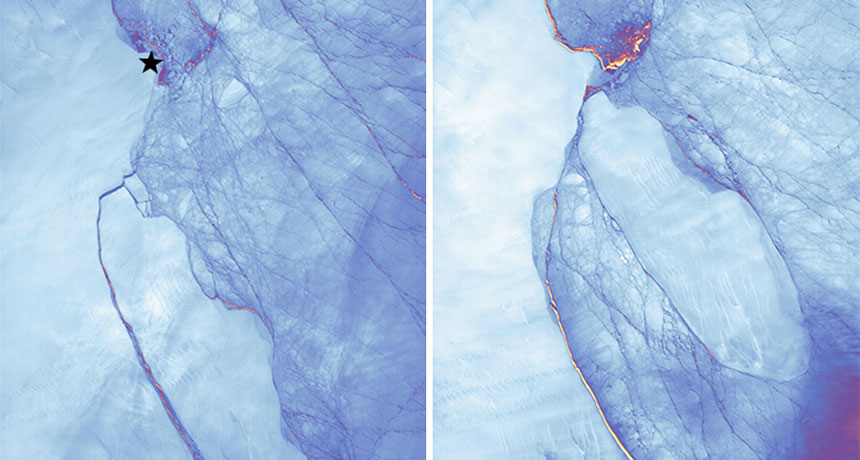The giant iceberg that broke from Antarctica’s Larsen C ice shelf is stuck

Curl the fingers of your left hand over your palm and stick out your thumb like a hitchhiker. Now, you have a rough map of Antarctica — with the inside of your thumb playing the part of the Larsen C ice shelf, says glaciologist Ted Scambos of the National Snow and Ice Data Center in Boulder, Colo.
About a year ago, a massive iceberg roughly the size of Delaware broke off from that ice shelf, and it hasn’t moved much since (SN: 8/5/17, p. 6). The chunk of ice traveled just about 45 kilometers northeast before getting stuck behind an elevated ice promontory called the Bawden ice rise.
Researchers monitoring satellite images of the iceberg say it’s been battering Bawden as winds and ocean currents push against the calved ice. That could be a problem, says Anna Hogg, an earth observation researcher at the University of Leeds in England. The Bawden ice rise acts “almost like scaffolding,” providing structure and stability to Larsen C, Hogg says. If it were destabilized, that could potentially lead to the collapse of the rest of the shelf, which could have implications for sea level rise.
That hasn’t happened yet. The iceberg may still be able to escape if it can twist around the tip of Bawden. “Currents and winds carry most of the icebergs in the same direction” — toward South Georgia Island, where many Antarctic icebergs eventually thin out and melt away, Scambos says.
Scientists are eager to study the seabed that was exposed when the iceberg first broke away. That environment could contain microbes and other tiny critters that have been inaccessible until now (SN Online: 10/13/17). An expedition by biologists to the area ended prematurely in February when thick ice prevented the ship from reaching the area (SN Online: 3/3/18). Another effort, aboard a South African icebreaker vessel, is planned for January 2019, Scambos says.